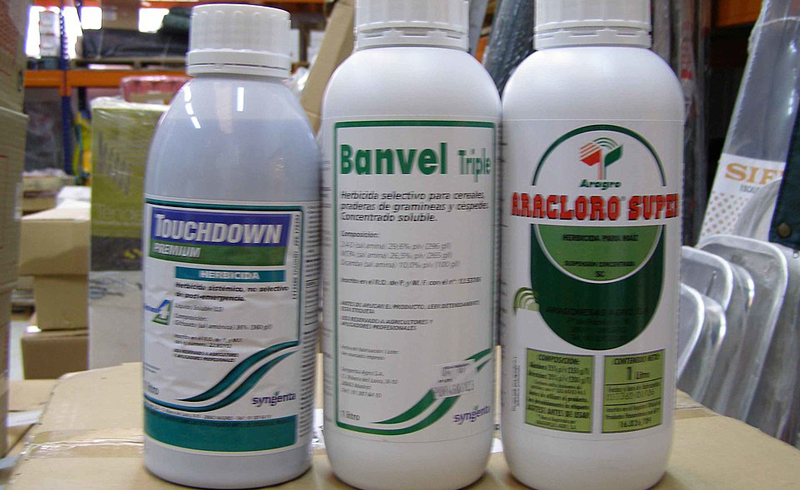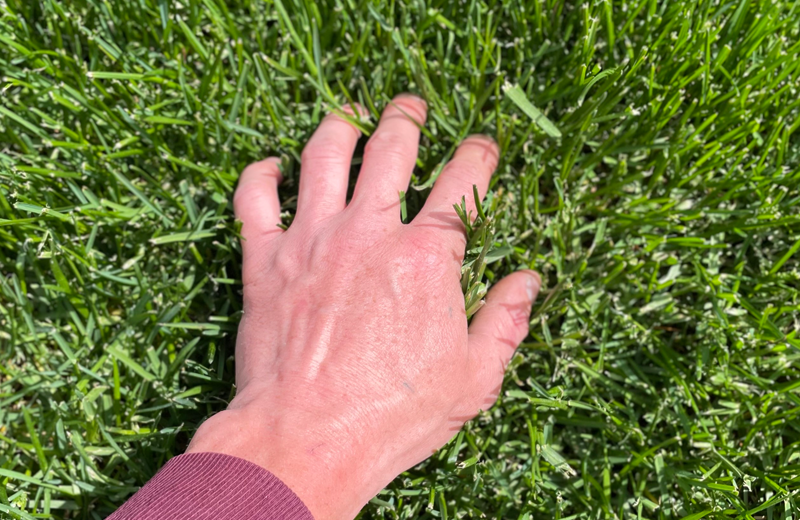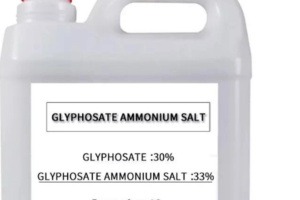
Why St. Augustinegrass is a Top Choice
St. Augustinegrass has become the darling of many gardens and landscapes, particularly in the sun-soaked regions of the southeastern and gulf-coastal United States. Its vibrant green hue and resilience in warmer climates make it a standout choice for those dreaming of a lush, eye-catching lawn.
What’s more, St. Augustinegrass has a unique way of growing. It uses stolons, often called “runners,” to spread across the ground. This means you can quickly watch your lawn transform from patchy spots to a thick, green carpet. If you’re aiming for a beautiful and robust lawn, St. Augustinegrass is a top contender.
The Battle Against Weeds
Let’s face it: Weeds are the uninvited guests of the gardening world. Just when you think your lawn is nearing perfection, these stubborn intruders can appear out of nowhere. For St. Augustinegrass, weeds can pose a challenge, especially during its early days. But there’s a silver lining: We have the tools to keep them in check.
Think of preemergence herbicides as the lawn’s protective shield. They work diligently to ensure that notorious weeds, like goosegrass and crabgrass, don’t steal the spotlight from your grass. Giving your St. Augustinegrass this protective boost sets the stage for a vibrant, weed-free lawn.
Decoding the Herbicide Mystery
With so many herbicides on the market, choosing the right one might feel like a puzzle. But here’s the uplifting part: There’s a wealth of research to guide us. Experts have tested and analyzed how different herbicides interact with St. Augustinegrass.
Some herbicides play nicely, allowing the grass to flourish without a hitch. Others might take a tougher stance against weeds, which can momentarily slow the grass’s spread. But with a sprinkle of knowledge and a dash of patience, you can select the perfect herbicide that ensures your lawn remains stunning and free from pesky invaders.
The Importance of St. Augustinegrass
A Gardener’s Dream Grass
St. Augustinegrass isn’t just any grass; it’s like the superstar of the lawn world. Gardeners and landscapers love it, and for good reason. Its thick, carpet-like quality gives gardens a luxurious feel, making any outdoor space look straight out of a home and garden magazine. The vibrant green blades stand tall and proud, adding a touch of nature’s best to homes, parks, and landscapes.
But it’s not just about looks. St. Augustine Grass is also a tough cookie. It’s built to withstand the challenges of warmer climates, making it a reliable choice for those living in the southeastern and gulf-coastal regions of the U.S. So, while it’s basking in the sun and turning heads with its beauty, it’s also silently fighting off the stressors of heat and humidity.

The Magic of Stoloniferous Growth
Now, let’s talk about what makes St. Augustinegrass truly special: its growth pattern. Have you ever noticed how some lawns expand and fill out quickly? That’s the magic of stoloniferous growth at work. St. Augustinegrass grows using stolons, like nature’s little expansion tools. These stolons, or “runners” as some gardeners call them, spread horizontally, hugging the ground and sprouting new grass.
This unique growth method means that even if you start with a few patches of St. Augustine grass, given some time and care, you’ll soon see it weaving a beautiful green tapestry across your garden. It’s like watching nature’s art show unfold in your backyard. And the best part? This grass doesn’t just grow; it thrives, making it a joy for any gardener or landscaper to work with.
The Challenge of Weeds
Unwanted Guests in Our Green Paradise
Every gardener’s journey has its share of challenges, and one of the most common culprits is weeds. Think of them as those uninvited guests who show up just when you’re about to throw the perfect garden party. Incredibly, when nurturing a young St. Augustinegrass lawn, these pesky invaders seem to have impeccable timing. But here’s the silver lining: every challenge presents an opportunity to learn and grow.
Weeds, in all their pesky glory, are simply plants trying to claim their space under the sun. While they might seem like a nuisance, they’re also a testament to the resilience of nature. With the proper knowledge and tools, you can ensure that your St. Augustinegrass remains the show’s star, with weeds playing a minimal role in your garden’s story.
Guarding Our Lawns: The Role of Herbicides
Now, you might wonder, “How do I keep these stubborn intruders at bay?” The answer lies in preemergence herbicides. Think of them as the guardians of your garden, standing watch and ensuring that notorious weeds don’t get a foothold. These herbicides create a protective barrier, preventing weeds like goosegrass, crabgrass, and the tricky annual bluegrass from sprouting and spreading.
But here’s the exciting part: using herbicides doesn’t mean you’re in for a battle. Instead, it’s about understanding and working with nature. Choosing a suitable herbicide and applying it at the right time sets the stage for your St. Augustine grass to flourish. It’s like giving your lawn a head start in the race, ensuring it grows lush and vibrant while keeping those pesky weeds in check.
The Role of Preemergence Herbicides
Understanding Preemergence Herbicides
Preemergence herbicides are like the unsung heroes of the gardening world. At their core, they’re designed to tackle weeds before they even emerge, giving your lawn a clean slate to grow. For those nurturing St. Augustinegrass, these herbicides can be a game-changer. They ensure grass doesn’t compete with weeds for nutrients, space, and sunlight.
But it’s not just about eliminating competition. It’s about creating an environment where your St. Augustinegrass can genuinely thrive. Keeping those pesky weeds at bay allows your lawn to spread, grow, and showcase its vibrant green hues without distractions.
Choosing the Right Herbicide for St. Augustinegrass
With many herbicides available, picking the right one might feel like finding a needle in a haystack. But fear not because research has paved the way. Experts have delved deep into understanding how different herbicides interact with St. Augustinegrass, ensuring you have the information to make the best choice.
Some herbicides gel well with St. Augustinegrass, letting it grow without any hitches. Others might be a tad more aggressive against weeds, which could slow down the grass’s spread for a bit. But here’s the good news: armed with the proper knowledge, you can strike a balance. You can choose an herbicide that keeps the weeds away and lets your St. Augustinegrass flourish in all its glory.
Application Tips for Maximum Effectiveness
Applying herbicides isn’t just a task; it’s an art. And like any art form, it requires a bit of know-how. For starters, always read the label. It provides invaluable information on when and how to apply the herbicide to ensure maximum effectiveness.
Timing is also crucial. Preemergence herbicides work best when applied just before the weeds begin to sprout. This means keeping an eye on the soil temperature and the seasons. A general tip? Early spring is often the best time, as it nips the weed problem in the bud, allowing your St. Augustinegrass to take center stage and grow without interruptions.
The Research Findings
A Deep Dive into the Study
When understanding how herbicides impact St. Augustinegrass, researchers from Mississippi State University took on the challenge. They embarked on a mission to provide gardeners and landscapers with clear insights, ensuring our beloved lawns get the best care possible. The study wasn’t just about numbers and data; it was about ensuring that every patch of St. Augustine grass reaches its full potential.
The methodology was meticulous. Using plugs for grass establishment, the researchers could closely monitor the effects of various herbicides. This approach provided a real-world scenario, mirroring the conditions many gardeners and landscapers face when nurturing their lawns. The dedication and precision of this study mean that the findings aren’t just facts; they’re actionable insights for anyone passionate about their green spaces.
Key Takeaways for Gardeners
The results were illuminating. For starters, not all herbicides are created equal regarding St. Augustinegrass. Some were like the grass’s best friends, like liquid-applied oxadiazon and atrazine. They ensured the grass established itself without delays, making it a top choice for those eager to see quick results.
However, a few herbicides, including dithiopyr and prodiamine, required more patience. While they were champions at tackling weeds, they did slow down the grass’s spread momentarily. But here’s the silver lining: With patience, the grass flourished, covering the area in its lush green embrace. The study serves as a reminder that a stunning St. Augustine grass lawn is within reach for every gardener and landscaper with the right choices and a dash of patience.
Implications for Future Lawn Care
Research like this isn’t just about the present; it’s about paving the way for the future. The findings from this study provide a roadmap for gardeners and landscapers, helping them make informed decisions for years to come. Whether you’re a seasoned gardener or someone just starting their lawn journey, these insights are invaluable.
Understanding the nuances of how different herbicides interact with St. Augustine Grass means that lawn care can be tailored to specific needs. It’s about optimizing growth, ensuring every grass blade gets the best start possible. Studies like this as the gardening world continues to evolve ensure we’re always equipped with the knowledge to nurture our lawns to perfection.
Modern Evaluation Techniques
Harnessing the Power of Multispectral Imaging
In the world of gardening and landscaping, technology is making waves, and multispectral imaging is at the forefront of this revolution. At its core, multispectral imaging is like giving gardeners a pair of super-powered glasses. With it, they can see their lawns in a new light! This technique captures images of the grass at different wavelengths, revealing details that the naked eye might miss.
But why should the average gardener care about this high-tech method? Because it’s all about understanding the health and vitality of the lawn. Multispectral imaging can highlight areas of stress, disease, or nutrient deficiency in the grass. It’s like having a health check-up for your lawn, ensuring any issues are spotted and addressed early on. With this technology, gardeners can be proactive, ensuring their St. Augustinegrass remains the crown jewel of their outdoor space.
Decoding NDVI, RVI, and CI-RE
Now, let’s dive a bit deeper into multispectral imaging. Terms like NDVI, RVI, and CI-RE might sound like tech jargon, but they’re straightforward indicators that can help gardeners better understand their lawns. Think of them as the vital signs of your St. Augustinegrass.
NDVI, or the Normalized Difference Vegetation Index, measures plant health. It gives gardeners a snapshot of how well their grass is performing. A high NDVI indicates a thriving lawn, while a low one might indicate that the grass needs more TLC. RVI, or the Ratio Vegetation Index, and CI-RE, the Chlorophyll Index-Red Edge, work similarly, providing insights into the grass’s chlorophyll content and overall vitality. With these tools, gardeners can make informed decisions, ensuring their lawns get the proper care at the right time.
Bridging the Gap Between Science and Gardening
While multispectral imaging and its associated indices might have their roots in science, they’re incredibly relevant to the everyday gardener. It’s all about bridging the gap between scientific research and practical lawn care. With these modern evaluation techniques, gardeners aren’t just relying on intuition; data back them.
This fusion of science and gardening means lawn care can be more precise than ever. These modern techniques provide clarity, whether it’s deciding when to water, how much fertilizer to use, or when to apply herbicides. It’s an exciting time to be a gardener or landscaper, with technology ensuring that our green spaces remain lush, vibrant, and healthy for years to come.
Practical Implications for Gardeners and Landscapers
Making Informed Herbicide Choices
For gardeners and landscapers, the world of herbicides can sometimes feel like a maze. With so many options and technical details, how does one choose the right product for their St. Augustinegrass?
Thankfully, the research and modern evaluation techniques have paved a more straightforward path. It’s now easier than ever to select herbicides that will tackle those pesky weeds and ensure that the grass thrives.
The key takeaway is that not all herbicides interact with St. Augustinegrass similarly. Some are gentle companions, allowing the grass to grow unhindered, while others might require a tad more patience as they take on the tougher weeds.
But with the insights from the research, gardeners can make choices that align perfectly with their lawn goals. It’s all about striking the right balance, ensuring the lawn remains a vibrant green oasis, free from unwanted intruders.
Optimizing Growth and Aesthetics
Beyond weed control, the findings and modern techniques offer insights into optimizing the overall growth and aesthetics of St. Augustinegrass—every gardener dreams of a healthy lawn and a visual delight. And with the knowledge at hand, this dream is entirely achievable.
Understanding the nuances of St. Augustinegrass’s growth, from its stoloniferous spread to its interaction with herbicides, allows for tailored care. Watering, mowing, and fertilizing can be done in sync with the grass’s natural rhythm. The result? A lawn that’s healthy and picture-perfect, ready to be the backdrop for family picnics, weekend relaxation, and outdoor gatherings.
Staying Ahead of Lawn Challenges
The world of gardening and landscaping is ever-evolving, with new challenges cropping up now and then. But with the practical implications drawn from research and modern techniques, gardeners and landscapers are better equipped than ever. Whether it’s a sudden weed invasion, unexpected patches, or growth slowdowns, the answers are now at our fingertips.
Being proactive is the name of the game. With the insights available, gardeners can anticipate and address potential issues head-on. It’s about ensuring that the St. Augustine grass lawn remains resilient, returning from challenges and continuing to be the lush, green sanctuary we all love.
In this journey, knowledge is power, turning every gardener and landscaper into a lawn care maestro.
Citation Source:
,,,, &(2023).Preemergence herbicide effects on St. Augustinegrass establishment. Agronomy Journal,115,1344–1355.https://doi.org/10.1002/agj2.21304

Bob Green, a passionate lawn care enthusiast with over two decades of landscaping experience, is this website’s proud owner. His vast knowledge of horticulture and dedication to helping homeowners maintain beautiful lawns are reflected in the valuable content he shares on his platform. John has always been interested in Agrostology.









